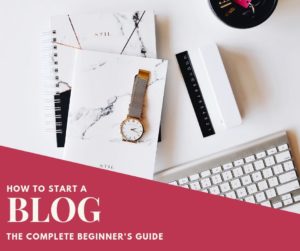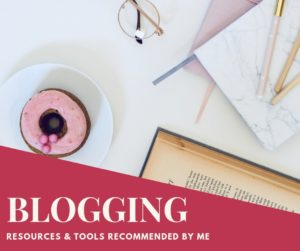6 Ways to Warm Up A Cold Email Lead For Sales
I am an affiliate with links to an online retailer in this blog post. When you read what I have written about a particular product and click on that link and buy something from the retailer, I can earn a commission. Please note that I only recommend products that I truly believe in and use in my business. Please read my full disclaimer here
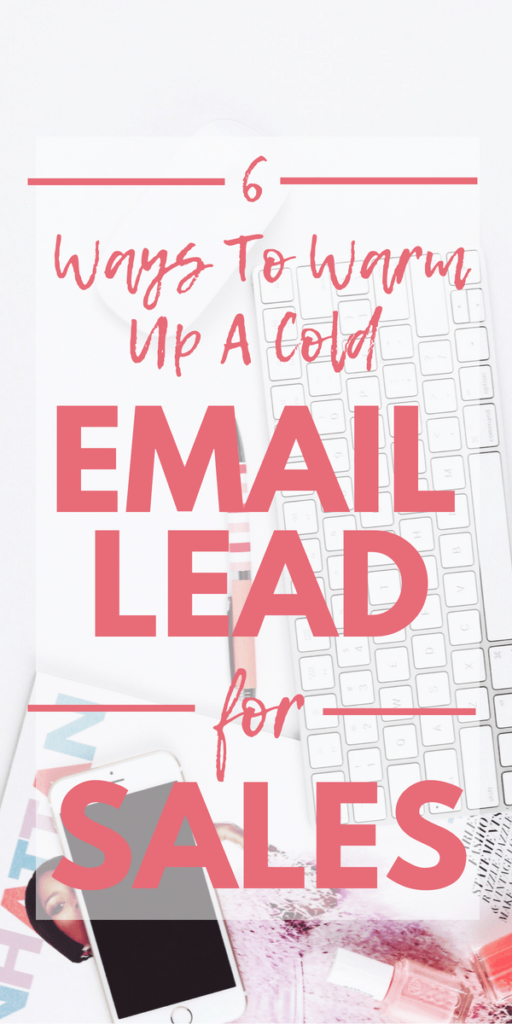 As marketers, we start email lists for one thing only – to convert that new lead, into a paying client or customer.
As marketers, we start email lists for one thing only – to convert that new lead, into a paying client or customer.
When we grow our email list and see the numbers increasing day by day, it’s easy to get excited at the possibility of every one of those leads converting into a paying client.
But unless your follow up email strategy is on point, your email list can be as useless as a dead horse with very little chance of generating sales from your subscribers.
When writing your follow up email sequence, place yourself in your prospect’s position. As a cold lead, they are already sceptical as they have only seen you once and don’t know exactly what to expect.
Their guards are up because they’ve probably already deciphered that you only wish to use them as a pawn in your marketing. They’re definitely waiting for you to mess up, so your emails need to show that you’re different from other marketers.
To do this, you have to use nurturing strategies that help to break the ice and get them to know you before you even ask for the sale.
In this post I will show you exactly how to strategise for best results with a cold email list, and how to warm them up for sales.
Here’s What You Will Learn:
- How to make a first impression with your welcome email
- How many emails to include in your sales email strategy
- What content to include in your sales emails
- How to write the perfect sales pitch
- What to do when leads don’t convert
How To Make A First Impression With Your Welcome Email
Even if you know that your end goal is to convert your lead into a paying customer or client, you do not want to start your email series with a sales pitch.
It is the biggest turn off for a lead who just came through your lead capture opt-in page and barely has had any time to get to know you. Except maybe for a few videos they saw of you on your website or a few articles you wrote here and there.
Your first welcome email is to do just that. Welcome the lead.
Acknowledge that they have made it on to your email list and thank them for doing so. Too many times we take this step for granted, but many of my leads respond to my welcome email by thanking me for my content or explaining why they decided to join my email list.
The fact that you can get a lead to respond, means that you have already started building the relationship and gives you an opportunity to demonstrate that you’re in fact a real person on the other end of the email.
So many leads who come onto an email list, know that your emails are automated. By adding a personal touch and some human-ness to the email, gives you points and helps you stand out from other marketers.
Another element of the welcome email is setting out the objective of the email campaign. You may wish to inform your leads why you created the email list, for example, to provide helpful insights into how to do affiliate marketing or to give tips on how to use Facebook ads for a business.
Whatever the purpose, set it out clearly so that the lead knows what to expect from you so they may decide whether they wish to stick around or leave.
It is also wise at this point to pre-frame your lead by mentioning your product or service.
Whilst the first email is not meant to be a sales pitch, briefly referring to your product or service invites the lead to become acquainted with it so they know that you do have an additional resource (albeit paid) that they can use to help them solve their problems.
Mentioning it here gives you enough time to prepare the lead for the sale down the line.
How Many Emails To Include In Your Sales Email Strategy
They say that the fortune is in the follow up and it is true.
Every lead that comes through your funnel, is likely to contemplate making a purchase from you after seeing an offer seven or more times. Some even say that it takes 12 hits before a purchase is made.
Therefore when creating your email strategy and wondering how many emails you should include in your sales email series, I would recommend seven.
Of course you can have more or less, but the reason why I suggest seven is because it gives you enough time to provide a lot of value to the lead whilst warming them up for your offer.
You will see later on in this post how I structure my emails.
It will also make sense why seven is such a significant number. If you were to make your email series shorter, then there is the risk that you will have to include so much information in your emails that it can lead to overwhelm.
When you lengthen the email cycle as well as space them out, for example including two-day intervals you have a higher chance of the lead taking in your information, learning from it, then seeing the benefit of your offer and how it can help them.
What Content To Include In Your Sales Emails
When writing a targeted email series dedicated to selling a product or offering a service I always have a beginning, middle and end.
The Beginning
At the beginning, which is the first email they receive, I like to welcome the lead so that they know who I am. Introduce myself and help them understand why they have joined the email list and what they can look forward to.
I also do some general housekeeping my asking them to whitelist my email so that it keeps me out of the spam box.
I do this in a way that allows the reader to see the benefit of doing so, such as they will keep updated with all material sent their way or they will never miss any important news that matter to them.
In the beginning I do not want to pursue the sale just yet as I am still in the nurturing phase. My aim therefore is to only break the ice, say hello and keep it moving.
The Middle
The middle is where I demonstrate to the lead my expertise in the niche. It usually spans emails two to four.
For example, if the service that is being offered is rental space, I want to provide some type of value within two or three emails that help to educate the lead.
Even if you are writing emails for an eCommerce product, don’t be afraid to spend some time providing education to the lead about your product.
For example, you can write content about how a particular product can be used, how it can benefit their day to day life or what alternative products would be useful to them.
Sometimes people may not know that they need a product or service and this is where you need to literally spell it out to them so they can see why it makes sense to invest in the purchase.
The End
This is where I get serious. I kick it up a notch and go for the punch line in emails five, six and seven.
The end is where I am telling the lead that I want their money.
After all the value that you have previously provided, don’t forget to use this time to ask for the sale.
Many email writers are afraid of asking their subscribers to make purchases because they do not want to drive them away or turn them off. But that is the main reason why you asked them to join your email list in the first place anyway.
You are running a business. It is a reasonable expectation that you want to be profitable and you can only do that by offering an exchange to your subscribers.
When asking for the sale I always pre-frame my subscribers by preluding to it in the beginning and middle emails.
So it makes it a natural flow that the next thing to do is get the sale.
When asking for the sale I do so over three emails:
1. The first one is a soft pitch directing the lead where they can purchase the product or service.
2. The second email is a hard pitch paying attention to getting the sale today. I offer incentives such as a time-sensitive discount, gift or free downloadable knowledge product to encourage the subscriber to make a purchase today.
3. The third email I remind the subscriber about the offer and give a final warning of the time-sensitive bonuses.
I have observed that by adding time-sensitive bonuses can really get your subscribers to take action and increase your conversion rates.
Related Article:
How To Build A Profitable Email List Step by Step
How To Write The Perfect Sales Pitch
So let’s put everything together with some examples of how you can ask your subscriber for the sale.
Often times marketers don’t know how to convince their subscribers to take out their credit cards and buy, so I have scrutinised sales emails of other marketers and broken it down for you.
Michelle Schroeder-Gardner
Here is one of Michelle’s sales emails, where she is promoting the sale of her course, Making Sense of Affiliate Marketing.
Michelle appears to have only one email in her sales email series. She goes for the sale in the first email which for me is a big no!
Where’s the relationship building? Where’s the wooing?!
It would appear that she incorporates all the points of my email series in this one email.
She starts by delivering the lead magnet in her first paragraph.
In her second to sixth paragraph she shares a bit of knowledge about her niche – affiliate marketing – by demonstrating her expertise and authority on the subject.
This kind of value then leads into her pitching her course about affiliate marketing.
Although she mentions that the readers can check out her bonuses, I’m not keen on the fact that she has not broken down the bonuses within this email, which makes it easier for the reader.
Frankly I don’t like the structure of this email as everything’s all meshed together in one. I do think a longer series could allow her to connect more with her readers.
Create And Go
Pay attention to this next sales email by Create and Go, which I think is the ideal way that an email should be structured.
This email is actually the seventh email in a sales email series where they delivered an email course over five days then sold their Pinterest Traffic Avalanche course in the sixth and seventh emails.
Notice how in the first few paragraphs they provide a bit of proof about their success with Pinterest and how it helped one of their clients.
This is very influential to subscribers to encourage them to make a purchase.
I really like how straightforward they were about describing their course so the reader knows what they’re going to get.
Also notice how they include incentives and bonuses to get the reader to buy today.
In their sales email they employ several urgency tactics, such as highlighting that the bonuses will be theirs if the subscribers purchased today.
They also stress that the discount is for a “limited time” and “will be taken down very soon”.
All in all this email scored well in my eyes and is one that I would recommend you follow.
Dan Henry
The final sales pitch email is by a guy named Dan Henry.
His email followed a series of 9 emails altogether and this one is eight out of nine.
By the time the email came around I knew exactly what he was selling as most of the emails concentrated on the product.
He “sold” the product mainly through testimonials and social proof so it’s a great way to create credibility by showing that other people are getting results.
In this sales email, Dan uses emotions to empathise with his readers. By touching on the feelings of your subscribers you can almost always get them to relate to you or a particular person that you are describing.
In this case he focuses on Corey’s near-broke position and how he resurrected himself by taking Dan’s course.
This is a great strategy as when people see how it was has worked for other people who are “just like them”, they tend to take action quicker.
Another thing that exudes from Dan’s email is his confidence.
Notice how he keeps it real by telling his readers what his objective is. That is, to get results.
I must say he sounds convincing and it’s different because so many marketers disguise their sales pitches by sugar coating and making it look fancy.
Even though Dan does not offer incentives for you to buy, I think he did a pretty good job in his tone and the use of social proof.
I like how he keeps it real and I would actually buy his course after reading this email.
From these three sales emails you should now have some inspiration for how to write your own sales email.
Take some elements from each email and go right ahead and create your own.
What To Do When Leads Don’t Convert
Not all your leads are going to convert.
That is the reality of email marketing. When you look at industry standards for activity within email marketing in eCommerce, you will find that sales conversions account for 1-5%.
I have not been able to find any statistics that show the sales conversion rates for service-based or product-based businesses.
So what happens when you do not convert leads? Well either those leads will drop off, this is where list cleaning comes in, or your leads may remain engaged with you and make a purchase months or years down the line.
Even though it takes at least 7-10 reminders for a subscriber to purchase your product, some people may only ever buy your product after months of following you.
So the lesson from this is to remain consistent in your email marketing efforts and continue to provide value and build the relationship.
Wrapping Up
As a marketer, always have an end goal for your email marketing, which ultimately should be converting your subscribers into sales.
There are good and bad ways of building a relationship for sales through email marketing and I have outlined the better steps to take when you generate your first subscribers.
Let’s summarise those steps:
1. Don’t start selling from your first email. Learn to get acquainted with your subscribers with a welcome email that supports relationship building.
2. An email series of 7-10 emails is ideal for converting subscribers into paying customers.
3. Include as much value as you can within those emails by pre-framing the subscriber for your product or service.
4. One to three of those emails has to be a hard sell. Learn how to master the sale by studying other marketer’s emails and taking a few key points and implementing them in your own.
Email marketing is a skill that you have to learn and it is the easiest to learn by doing and seeing what works for you.
Not all email lists are made equal so study your own efforts and work on improving it every day.
Cheers,
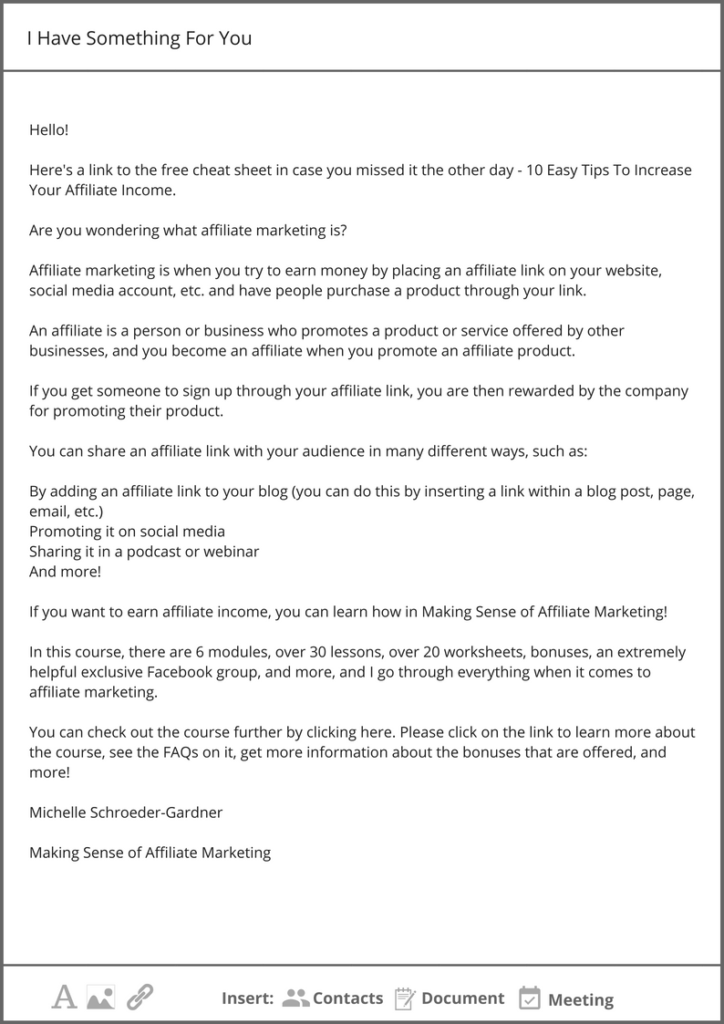
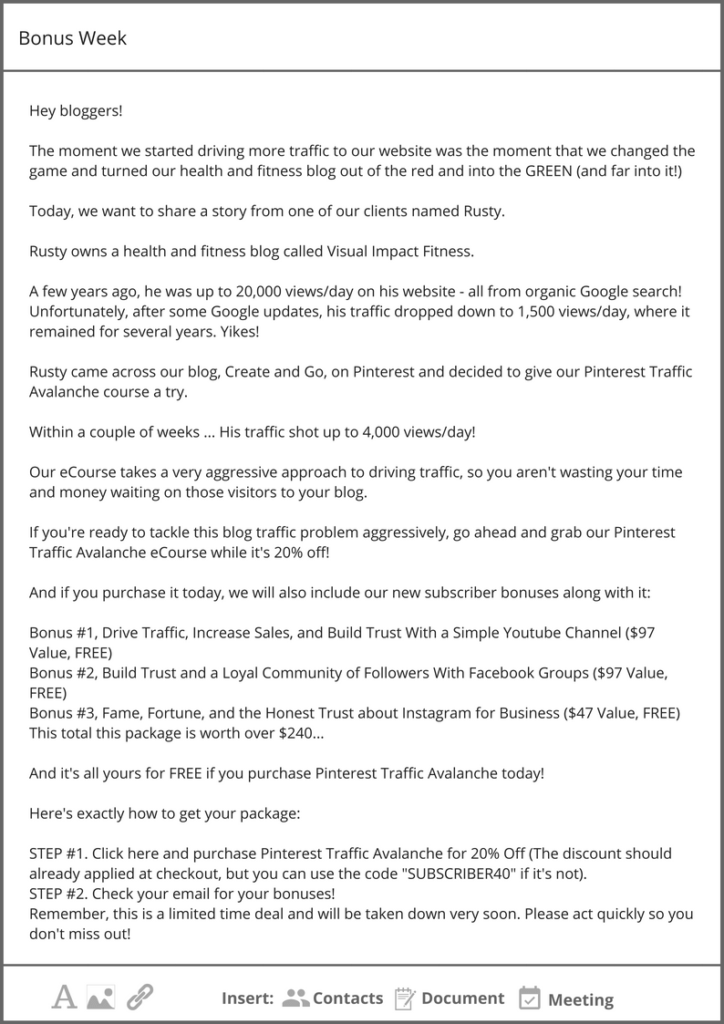


 Previous Post
Previous Post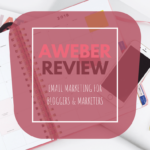 Next Post
Next Post
